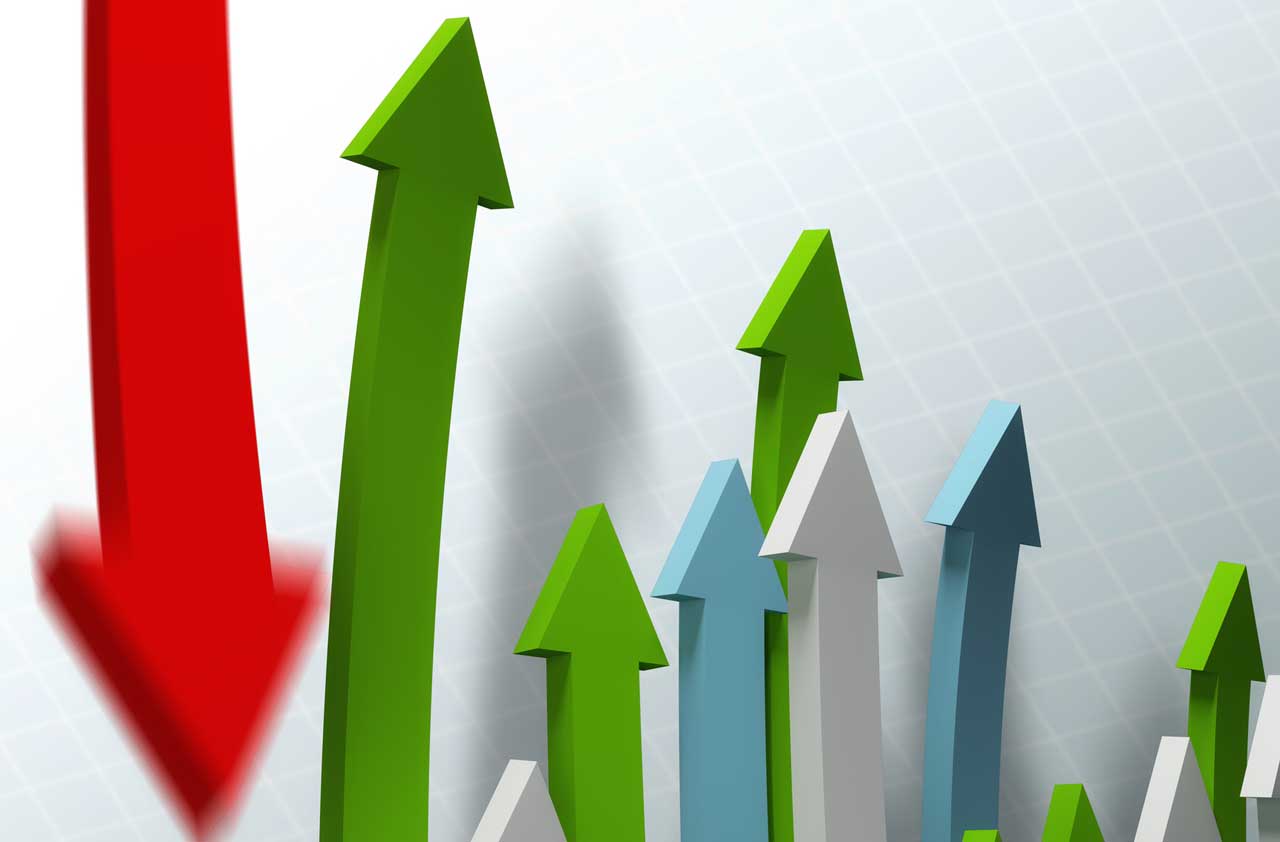How One Bad Year Can Wreck Your Investing Results
My 2015 setback has had a dramatic impact on my cumulative returns. On that basis, I trail my bogey by 31 percentage points.


When evaluating a mutual fund’s performance, I’ve always focused on year-by-year results. In doing so, I have typically brushed off a bad year here and there, as long as the fund did better than the market (or an appropriate index) in most years.
But managing the Practical Investing portfolio has made me realize the folly of my approach. That’s because I’ve seen firsthand how one especially rotten year can sink long-term results and make it difficult to catch up. Moreover, what looks like a relatively minor difference in annualized returns caused by an occasional bad year adds up to far more than you’d expect when you look at results on a cumulative basis.
The math is pretty simple. And yet, if I had not been forced to compare my own portfolio’s returns with a market index, I don’t think I would have examined my results closely enough to take stock of the damage.
From just $107.88 $24.99 for Kiplinger Personal Finance
Become a smarter, better informed investor. Subscribe from just $107.88 $24.99, plus get up to 4 Special Issues

Sign up for Kiplinger’s Free Newsletters
Profit and prosper with the best of expert advice on investing, taxes, retirement, personal finance and more - straight to your e-mail.
Profit and prosper with the best of expert advice - straight to your e-mail.
Dig into the data with me to get a better sense of the problem. My portfolio is with Vanguard’s brokerage arm. By using the “balances over time” feature, I calculated year-by-year results for my portfolio, as well as for my small position in Vanguard Total Stock Market ETF (symbol VTI), the exchange-traded fund that serves as the portfolio’s bogey. In all but one year of the portfolio’s 5½-year history, its performance has been relatively close to that of the index.
In the first four months of 2017, for example, my portfolio earned 9.7%, compared with 6.8% for the ETF. In 2016, my investments earned 16.7%, and the ETF gained 12.8%. In 2014, I netted 16.0%, versus 12.5% for the index. In 2013, both the index and I gained 33.4%. And in 2012, the year I gradually finished filling out my portfolio, I earned 10.1%; the ETF’s return for a comparable period was 13.0%.
The outlier. You may have noticed that I haven’t said anything about 2015. Thanks to a few awful picks—as well as my bent toward value stocks, which hurt during a year when large growth companies led the way—my portfolio performed abysmally in 2015. It lost 20.0%, while the overall market essentially broke even. Because of that miserable year, the portfolio’s annualized return through April 30, 2017, stood at 10.3%, compared with 13.5% annualized for the benchmark. Not great, but not a disaster, either.
But the impact of my 2015 setback becomes far more dramatic when you look at cumulative results. As of April 30, my portfolio had gained a total of 74.1%—a shocking 31 percentage points less than the ETF.
How did one 20% loss land me 31 percentage points behind? The short answer is compounding. At the end of 2014, my portfolio and the index were neck-and-neck. The actively managed part of my portfolio had earned a cumulative 69.8% and was worth $322,640 (compared with an initial stake of $189,998), while the ETF was up 69.7% and was worth $18,430 (versus an initial investment of $10,863).
But by the end of 2015, the value of my portfolio had shrunk to $258,382. And that meant I needed to earn 25% in 2016 to simply restore the portfolio’s end-of-2014 value. Instead, I earned 16.5%. That was not a bad year’s work, but my investments were still worth less than they were on December 31, 2014. As for overtaking my benchmark, the chances of that happening anytime soon are remote, even if I can beat it by three to four percentage points per year.
So why bother to buy individual stocks at all? I can’t speak for others, but a few things make it worthwhile for me. Investing a small portion of my net worth this way helps keep me abreast of valuations, both on an individual and a market-wide level. That knowledge helps me stay calm when one of my stocks or the overall market stumbles. Besides, I suspect that the humility engendered by comparing my results with the index is good for the soul.
Profit and prosper with the best of Kiplinger's advice on investing, taxes, retirement, personal finance and much more. Delivered daily. Enter your email in the box and click Sign Me Up.

-
 7 Ways to Save Money on Almost Everything
7 Ways to Save Money on Almost EverythingHigh prices got you down? These strategies can help you reap deep discounts on everyday spending.
-
 My Top 10 Stock Picks for 2026
My Top 10 Stock Picks for 2026Each year, we ask an expert to pick 10 stocks that have the potential to beat the market over the next 12 months. Here are his choices for 2026.
-
 Special Report: The Future of American Politics
Special Report: The Future of American PoliticsThe Kiplinger Letter The Political Trends and Challenges that Will Define the Next Decade
-
 The Most Tax-Friendly States for Investing in 2025 (Hint: There Are Two)
The Most Tax-Friendly States for Investing in 2025 (Hint: There Are Two)State Taxes Living in one of these places could lower your 2025 investment taxes — especially if you invest in real estate.
-
 The Final Countdown for Retirees with Investment Income
The Final Countdown for Retirees with Investment IncomeRetirement Tax Don’t assume Social Security withholding is enough. Some retirement income may require a quarterly estimated tax payment by the September 15 deadline.
-
 How to Beef Up Your Portfolio Against Inflation
How to Beef Up Your Portfolio Against Inflationinvesting These sectors are better positioned to benefit from rising prices.
-
 Taxable or Tax-Deferred Account: How to Pick
Taxable or Tax-Deferred Account: How to PickInvesting for Income Use our guide to decide which assets belong in a taxable account and which go into a tax-advantaged account.
-
 Smart Investing in a Bear Market
Smart Investing in a Bear Marketinvesting Here's how to make the most of today’s dicey market.
-
 How to Open a Stock Market Account
How to Open a Stock Market Accountinvesting Investing can be fun, but you need a brokerage account to do it. Fortunately, it’s easy to get started.
-
 The Right Dividend Stock Fund for You
The Right Dividend Stock Fund for YouBecoming an Investor Dividend stock strategies come in many different flavors. Here's what to look for.
-
 Alternative Investments for the Rest of Us
Alternative Investments for the Rest of UsFinancial Planning These portfolio diversifiers aren't just for the wealthy.